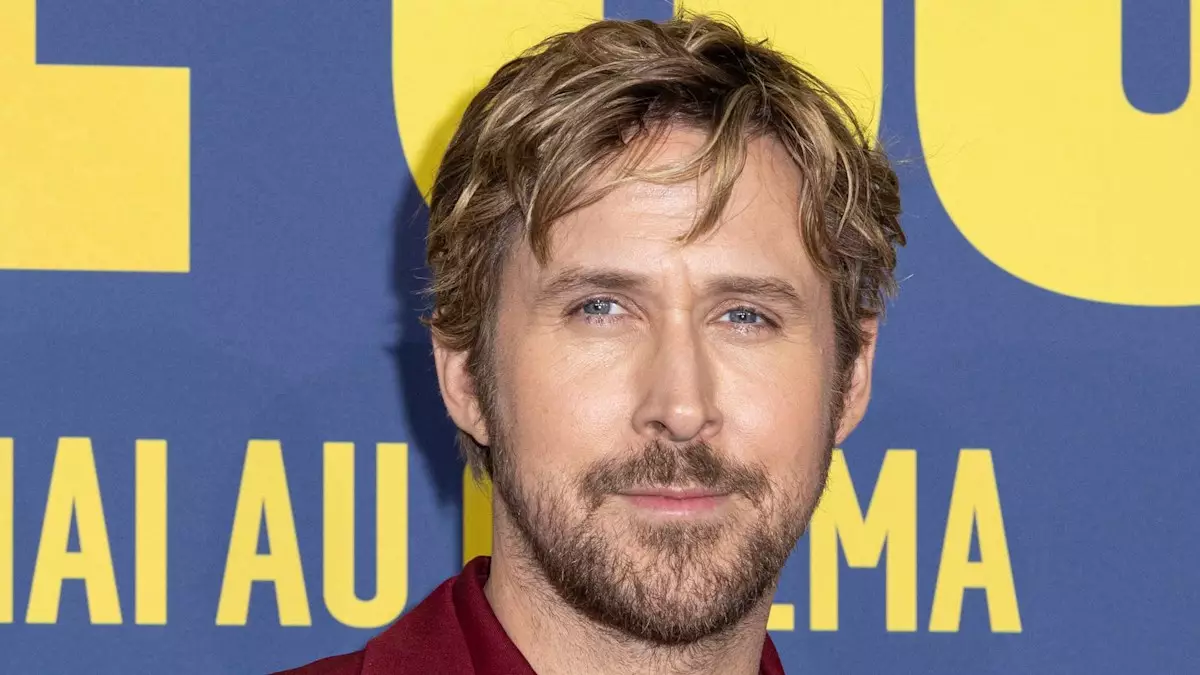Ryan Gosling’s latest appearance in the trailer for *Project Hail Mary* is a striking example of his dedication to fully immersing himself in complex characters. The 44-year-old actor, normally known for his meticulously groomed look, emerges almost unrecognizable with long, wavy hair and a scruffy beard—a stark departure from the clean-cut image typically associated with him. This physical makeover isn’t just cosmetic; it’s an artistic commitment that signals the depth and intensity Gosling is bringing to his role as Ryland Grace, a molecular biologist and teacher thrust into a staggering cosmic mission.
Such transformations are not new for Gosling, who has repeatedly pushed his comfort zones to inhabit varied personas. In *Project Hail Mary*, the narrative thrust involves a desperate attempt to save the dying stars, including our own sun—a premise ambitious in scope and brimming with existential questions. Gosling’s transformation visually echoes the rawness and isolation that his character experiences after waking in a coma far from Earth, a visual story-telling technique that adds layers to the performance before a single word is spoken.
Taking Risks in a Risk-Averse Industry
In an era where actors often rely on star power and familiar roles to secure box office success, Gosling’s career choices reveal a commendable appetite for diverse and challenging parts. His willingness to appear drastically different—physically and emotionally—reflects an artistic bravery that’s becoming increasingly rare. He openly embraces the “insanely ambitious” nature of *Project Hail Mary*, understanding that such grandeur and complexity are precisely why cinema remains a vital cultural experience.
This attitude sets Gosling apart from peers who shy away from unpredictable roles. It takes a unique blend of confidence and humility to reject the safety of being typecast and instead commit to stories that might alienate some viewers but ultimately elevate the cinematic art form. As a producer on the film, Gosling’s claim that “this is why we go to the movies” is both a declaration of his passion for storytelling and a challenge to audiences to embrace risk in creative ventures.
Confronting Public Expectations and Criticism
Gosling’s risk-taking extends beyond science fiction. His portrayal of Ken in Greta Gerwig’s *Barbie* attracted disproportionate criticism, largely centered around his age rather than the merit of his performance. Despite being an acclaimed actor in his prime, Gosling faced backlash for stepping into a role traditionally considered lighthearted and perhaps even trivial. However, his response to the criticism was refreshingly sardonic and insightful. By pointing out the cultural neglect of the character Ken, Gosling cleverly dismantled the sense of entitlement some audiences felt toward the role.
His performance as Ken—original, comedic, and surprisingly heartfelt—was later validated by critical acclaim and an Oscar nomination, silencing many skeptics. This episode embodies Gosling’s broader career ethos: ignoring the noise and dedicating himself to roles that genuinely inspire him, regardless of mainstream expectations. It sends a powerful message to artists about the importance of authenticity and resilience in the face of dismissal or derision.
Support Systems and Personal Motivations
Behind Gosling’s fearless career moves lies a solid foundation of personal support, notably from his wife Eva Mendes. Her public expressions of pride and understanding underscore the significance of having a close support network in navigating the pressures of high-profile and controversial roles. Mendes’ acknowledgment of the negativity Gosling endured, paired with her celebration of his achievements, humanizes the actor’s journey and highlights how personal relationships can empower creative risk-taking.
Gosling’s evolving image and career choices suggest an artist driven not by external validation but by a desire to explore and expand his craft. His willingness to embrace discomfort—whether it means physical transformation, critical skepticism, or genre shifts—enhances his credibility and underscores his seriousness about acting as an art form rather than merely a career.
The Broader Implications for Hollywood
In a film industry increasingly driven by franchises, sequels, and safe bets, Gosling’s pathway offers a refreshing alternative. His career trajectory reminds us that embracing the unexpected—be it through reinventing appearances, tackling ambitious narratives, or responding thoughtfully to critique—can yield powerful artistic statements. His work serves as a subtle but steady pushback against the homogenization of celebrity and film, urging audiences and creators alike to value originality, boldness, and depth. Gosling’s transformations are arguably not just about shifting looks but about expanding the very language of modern cinema, challenging viewers to reassess what it means to fully inhabit a role.

